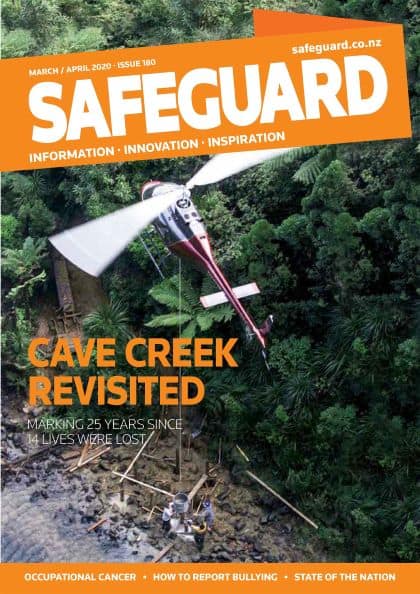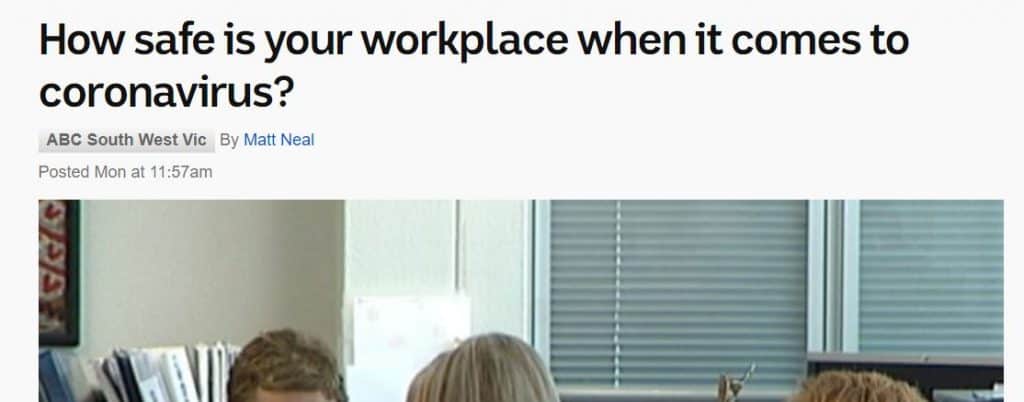
Safeguard‘s Peter Bateman seems to have summarised the role of occupational health and safety (OHS) in this time of COVID19 well in his March/April Editorial. Why are OHS advisors still needed?

Safeguard‘s Peter Bateman seems to have summarised the role of occupational health and safety (OHS) in this time of COVID19 well in his March/April Editorial. Why are OHS advisors still needed?
The coronavirus pandemic is an unexpected challenge for many employers and for workers. As this article from the Australian Broadcasting Corporation shows, there is confusion about the rights and duties of both parties at work.

Larry acted under his duty to not put himself at harm by raising his concern to his employer. The employer should have already determined that the workplace is safe and without risks to health and implemented control measures to reduce the risk of cross-infection. Guidance on how to do this has existed for several weeks.

Australia is starting to settle into a state of stability as the various restrictions on life and work become more consistent. This has also allowed for some to start thinking about the recovery phase – the “bridge”, the awakening, whatever one wants to call it – to reconsider what we think of work and workplaces and our expectations are for the future. Do we resurrect the BC (Before COVID19) employment and economic models or work differently? There is an opportunity to steer work and business into a more sustainable direction that reduces physical and psychosocial harm and regains productivity and profitability. The structures, models and criteria already exist.
And, perhaps, we should incorporate the values recommended by actor, Matthew McConaughey.

HRDaily unlocked an article concerning workplace sexual harassment on March 6 2020. The article was written by lawyer Fay Calderone and SafetyAtWorkBlog sought clarification from her on a number of points.
Some of the issues raised in the original article and Calderone’s responses will be discussed in a secondary article.

“Coercive control” is getting attention in New South Wales in relation to domestic violence but there are similarities to workplace behaviours such as sexual harassment and bullying.
The Chief Psychiatrist of Victoria’s “guideline and practice resource: family violence” says
“Family violence is understood as a pattern of repeated and
page 5
coercive control, aiming to control another person’s thoughts, feelings and actions.”

There has been much discussion about mixed messages in relation to the COVID19 coronavirus pandemic. Occupational health and safety (OHS) is still trying to adjust to the new working environment and needs to be careful it does not contribute to the confusion that mixed messages is creating.
Some of the mix comes from the growth in influence of alternative information and media sources linked to the Internet. Some is concerned with the declining trust the community has in government and private institutions. Some more may have come from the complacency of the OHS profession and community.
Below is an example of the mixed message problem when OHS is jumbled up with other considerations, even though one article says that OHS has become everything.

A lot of focus is currently on casual workers as their jobs disappear due to the responses to the COVID19 coronavirus. Australia has around 2.6 million of them and there are many more workers who may be classified as Part Time but operate on uncertain rosters and are, in reality, as precarious as casual employees. Occupational health and safety (OHS) is struggling to address the hazards presented by modern variations of precarious work, such as gig economy workers, because it, and government economic and employment policy more generally, is structured on the assumption of Full Time Employment (FTE) with work occurring mainly from nine to five, on weekdays with weekends off.
Consideration of precarious worker OHS may seem a lesser priority at the moment as many of us are quarantined or quarantine by choice but at some point, hopefully, within the next twelve months, business will resume. However, that business model and structure is unlikely to be the same. Indeed, it should not be same as the risk profile for all businesses and the community generally has changed. So, let’s have a look at some of the recent thinking about precarious work and the OHS risks so that we can build a better, safer model.